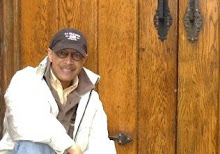
The origins of the Music Express is not clear.What we do know is that it is an amusement park and carnival ride designed by Moser Rides of Germany. Several near-identical ride designs are also produced by other companies; Musik Express by American companies Bertazzon and Majestic Rides, Himalaya by American company Wisdom Rides, German company Mack, and French company Reverchon, and Silver Streak by Wisdom Rides. This ride is a modern adaption of the famous Harry Traver Caterpillar rides.
The ride features twenty 3-passenger cars connected in a circle. These cars rotate on a track with alternating sloped and flat sections. Rotation is possible in both a backwards and forwards direction, as the ride is manually operated. The ride is powered by 4 DC motors, and can reach a maximum speed of 12 rotations per minute.
The riders in each car are restrained by a single solid lap bar that is locked across the body of the car; making the ride unsuitable for young children or people of short stature. The bar must be manually locked or unlocked, and only locks in one position. Lights and music are also controlled by the operator, which (as the name suggests) contribute heavily to the ride experience. Most parks and carnivals require all riders to be at least 42 inches or even taller, depending on circumstances and ride design.
Most Music Expresses are built with a backdrop dividing the rear third of the ride from the front two-thirds. This backdrop, normally covered in artwork and lights, and providing a mild headchopper-like effect as the riders enter and exit the rear section. As this blocks lines of sight, additional staff are required to safely supervise this ride in operation.
At at least Dorney Park's Musik Express, written above are the words "Mit Musik Alles Gesse Besser", which, loosely translated, is German for "With music, all go better." Find out more about this popular ride at: www.bertazzon-america.com/musik-express.php
Research info gathered at: www.wikipedia.org
Now, here's a poem that's an amusement ride too:
Hairnet & Underwear
Perhaps merely listening
The ride features twenty 3-passenger cars connected in a circle. These cars rotate on a track with alternating sloped and flat sections. Rotation is possible in both a backwards and forwards direction, as the ride is manually operated. The ride is powered by 4 DC motors, and can reach a maximum speed of 12 rotations per minute.
The riders in each car are restrained by a single solid lap bar that is locked across the body of the car; making the ride unsuitable for young children or people of short stature. The bar must be manually locked or unlocked, and only locks in one position. Lights and music are also controlled by the operator, which (as the name suggests) contribute heavily to the ride experience. Most parks and carnivals require all riders to be at least 42 inches or even taller, depending on circumstances and ride design.
Most Music Expresses are built with a backdrop dividing the rear third of the ride from the front two-thirds. This backdrop, normally covered in artwork and lights, and providing a mild headchopper-like effect as the riders enter and exit the rear section. As this blocks lines of sight, additional staff are required to safely supervise this ride in operation.
At at least Dorney Park's Musik Express, written above are the words "Mit Musik Alles Gesse Besser", which, loosely translated, is German for "With music, all go better." Find out more about this popular ride at: www.bertazzon-america.com/musik-express.php
Research info gathered at: www.wikipedia.org
Now, here's a poem that's an amusement ride too:
Hairnet & Underwear
Perhaps merely listening
Morning doves hidden in the honeysuckle
Bacon unwrapped from butcher's paper
Zippered compartments of fresh underwear
Two tin cans of ladyfingers
Shelved mason jars of glass eyes
The snap in an archer's bow
Wooden oars that riddle the water
Waitresses chattering in hairnets
Apple pie & fireworks & gnats
Fiddle contest rain or shine
Especially in this one stop-light town
Poem first published at: http://www.dreamvirus.com/
Visit my ezine: http://www.concelebratory.blogspot.com/
and personal blog: http://www.copyat5.blogspot.com/
Copyright 2007 by Maurice Oliver. All Rights Reserved.
Poem first published at: http://www.dreamvirus.com/
Visit my ezine: http://www.concelebratory.blogspot.com/
and personal blog: http://www.copyat5.blogspot.com/
Copyright 2007 by Maurice Oliver. All Rights Reserved.







